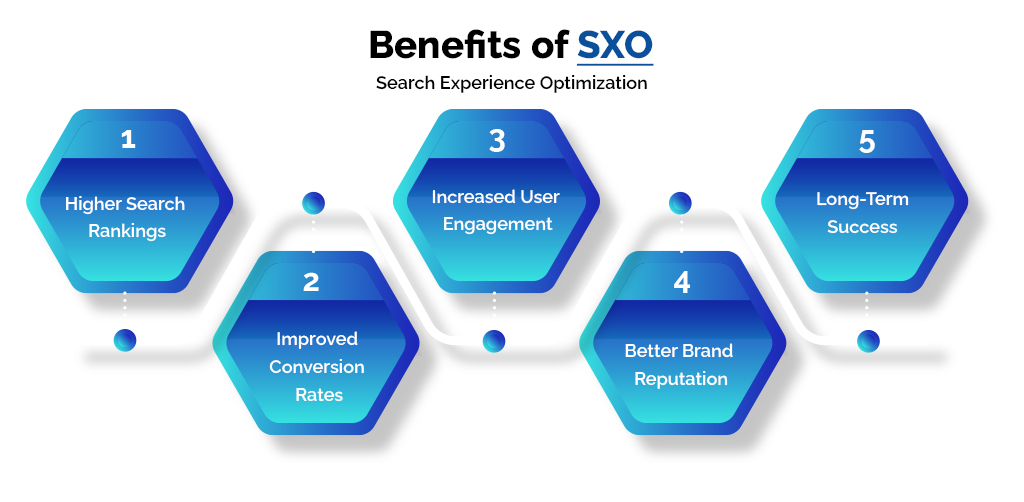How To Improve Search Experience Optimization?
In the digital age, merely optimizing your website for search engines is not enough. Search Experience Optimization (SXO) has emerged as a crucial strategy to enhance user engagement and drive conversions. SXO focuses on providing a seamless and enjoyable experience for users while ensuring that your site ranks high in search engine results. Therefore, in this blog, we will delve into the concept of search experience optimization, its importance, and practical ways to improve it. By focusing on SXO, you can ensure a better user experience and higher engagement on your site.
What Does Search Experience Mean?
Search experience refers to the overall interaction a user has with search engines and websites after performing a search query. It encompasses the journey from the moment a user types in their query to the moment they find and interact with the content on your website. A positive search experience ensures that users find relevant, high-quality content quickly and effortlessly. Consequently, several factors contribute to a good search experience:
- Relevance: The content must be highly relevant to the user’s search query. This means understanding user intent and providing information that meets their needs. Additionally, relevance is key to keeping users engaged and satisfied.
- Usability: The website should be easy to navigate, with a clear structure and intuitive design. Users should be able to find what they are looking for without any hassle. Furthermore, good usability improves overall user satisfaction.
- Speed: Fast-loading pages are critical. Slow websites frustrate users and lead to higher bounce rates. Hence, optimizing page speed is essential for a good search experience.
- Mobile-Friendliness: With an increasing number of searches conducted on mobile devices, ensuring your site is mobile-responsive is essential. Mobile-friendliness ensures a wider reach and better user experience.
- Content Quality: High-quality, informative, and engaging content keeps users on your site longer and encourages them to explore further. Consequently, investing in content quality is crucial.
How to Improve SXO?
Improving Search Experience Optimization involves a combination of SEO techniques and user experience enhancements. Here are some practical steps to boost your SXO:
- Conduct Thorough Keyword Research
- Identify the keywords and phrases your target audience is searching for. Furthermore, use tools like Google Keyword Planner or SEMrush to find relevant keywords with high search volume and low competition.
- Integrate these keywords naturally into your content to improve visibility. Additionally, ensure that the content remains readable and engaging.
- Optimize Page Speed
- Compress images and use modern formats like WebP. Additionally, minimize HTTP requests by reducing the number of elements on a page.
- Use browser caching and content delivery networks (CDNs) to improve load times. Hence, faster pages result in a better user experience.
- Enhance Mobile Usability
- Implement a responsive design that adapts to different screen sizes. Moreover, ensure buttons and links are easily clickable on mobile devices.
- Simplify navigation menus for mobile users. Consequently, this improves overall mobile usability.
- Create High-Quality Content
- Focus on producing content that is informative, engaging, and answers users’ queries. Hence, use multimedia elements like images, videos, and infographics to enhance user engagement.
- Regularly update your content to keep it fresh and relevant. Consequently, this keeps users returning for more.
- Improve Site Navigation
- Use a clear and logical menu structure. In addition, implement internal linking to guide users to related content.
- Use breadcrumb navigation to help users understand their location on your site. Hence, better navigation improves user experience.
- Optimize for Voice Search
- With the rise of voice assistants, optimize your content for voice search queries. Therefore, use natural language and conversational keywords.
- Create FAQ sections to answer common voice search questions. Consequently, this improves accessibility.
- Leverage Schema Markup
- Implement structured data to help search engines understand your content better. Consequently, use schema markup to enhance your search listings with rich snippets like reviews, ratings, and event information.
- Monitor and Analyze User Behavior
- Use tools like Google Analytics to track user behavior on your site. Moreover, analyze metrics such as bounce rate, average session duration, and pages per session.
- Use this data to identify areas for improvement and make informed decisions. Consequently, this leads to better optimization.
Read What Google Says: Understanding page experience in Google Search results
Benefits of SXO

Implementing SXO offers numerous benefits that can significantly impact your website’s performance and your business’s bottom line:
- Higher Search Rankings
- Search engines prioritize websites that provide a great user experience. By optimizing for SXO, you increase your chances of ranking higher in search results. Hence, better visibility.
- Increased User Engagement
- A seamless and enjoyable search experience keeps users on your site longer, reducing bounce rates and increasing the likelihood of conversions. Consequently, better engagement.
- Improved Conversion Rates
- You can boost your conversion rates by addressing user needs and providing a smooth journey from search to conversion. Therefore, better business outcomes.
- Better Brand Reputation
- A positive search experience enhances your brand’s reputation. Satisfied users are more likely to return and recommend your site to others. Hence, a better reputation.
- Long-Term Success
- While traditional SEO focuses on short-term gains, SXO ensures long-term success by building a loyal user base and adapting to changing search algorithms consequently, sustained success.
SEO vs. SXO
SEO (Search Engine Optimization) and SXO (Search Experience Optimization) are often viewed as separate strategies, but they complement each other and should be integrated for maximum impact. Notably:
- SEO focuses on optimizing your website for search engines. This includes keyword optimization, link building, and technical improvements to enhance your site’s visibility in search results. Hence, better search rankings.
- SXO goes a step further by focusing on the user’s journey. It aims to provide a seamless and enjoyable experience, from the search query to the final interaction with your site. Therefore, better user experience.
While SEO is essential for attracting visitors to your site, SXO ensures they have a positive experience once they arrive. By combining SEO and SXO, you can attract more visitors, keep them engaged, and convert them into loyal customers. Consequently, comprehensive strategy.
Conclusion
In conclusion, search experience optimization (SXO) is a vital strategy for enhancing user satisfaction and driving business success. By understanding and implementing the principles of SXO, you can create a website that not only ranks high in search results but also provides an outstanding user experience. This, in turn, leads to higher engagement, improved conversion rates, and long-term growth for your business. Therefore, investing in SXO is crucial for sustained success.




